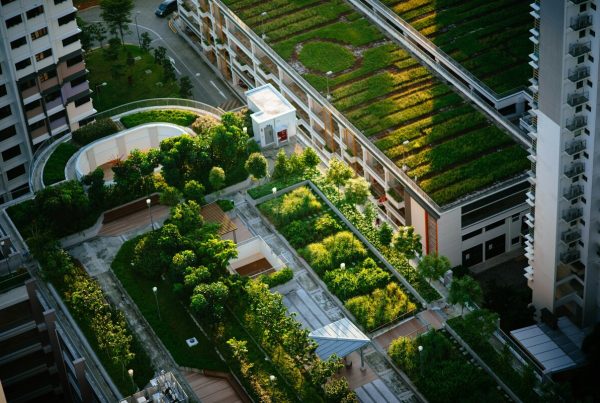Food waste is serious matter. Even if we bought it with our hard-earned cash doesn’t mean we can waste. Here’s why it hurts your wallet and the planet.
There’s a big disconnect in the world’s food supply and demand, and that’s an alarming thing. According to the Food and Agriculture Organization of the United Nations (FAO), an estimated 795 million people are chronically undernourished in 2012-2014. So while citizens of developed nations enjoy endless access to all kinds of food at low, low prices, the poor in Third World countries struggle to afford a single decent nourishing meal each day.
And yet in all of these, we’re still wasting too much perfectly good food. Food waste is serious matter. One third of global food production is wasted, says the UN. In the US, up to 40{e3829ec1db02d54faaf9fa2de0d48db26af01d7a7944a63c3b26976124791cab} of all edible food simply ends up in landfills, even outnumbering the plastic and paper waste there.
Every Bite Counts
With so many people going hungry all over the world, and so much food unnecessarily wasted, you’d think somebody ought to bridge the gap somewhere. Unfortunately, connecting surplus food to those who need them isn’t as easy as it sounds, since food wastage happens in various levels. From the farm to transportation, to the warehouses and supermarket shelves, to the consumers’ shopping basket and finally to their home.
There will be inevitable wastage and preventable ones. We can always minimize the former through better technology and techniques (e.g. right storage and right timing of harvest).
As for the preventable wastage, that usually involves a change in attitude, since most of us have an impersonal regard for food. We have limited knowledge of food production, specifically the many resources it takes for food to be produced: water, energy, fertilizers, livestock feeds, pesticides, electricity, gasoline, etc, so we don’t usually care.
For many wealthy nations food prices are inherently low, so it’s too easy to chuck a piece of vegetable down the trash bin or pour old milk down the drain and just buy another one next time we’re in the grocery. These tiny habits might seem inconsequential and harmless, but if every household and every person had the same wasteful, irresponsible attitude towards food, that would take a toll not just on our food industry but for the ecosystem as well.
Ugly Vegetables Have Feelings Too
Here’s how consumer attitude can lead to food waste. As consumers we want to pay for the best produce, which forces retailers such as supermarkets and groceries to display only the best of course, which in turn forces farmers to choose only the best harvest, rejecting the “ugly” ones. In the UK, up to two fifths of vegetable and fruit crops are wasted because they don’t meet consumer and retailer aesthetic standards. Potatoes, naturally susceptible to pock marks, blemishes and deformities, usually take the brunt. But other crops such as carrots, tomatoes, eggplants, radishes, pears, apples, etc. fall victim to discrimination too, tossed instead to the compost heap or else fed to livestock.

Embracing the ugly. Supermarkets are starting to sell previously rejected “ugly”| produce for a cheaper price. A win-win scenario for shoppers and the environment. (Image from Sidedish.dmagazine.com)
Fortunately, many retailers such as Intermarché in France, Imperfect Foods in California, and Loblaws in Canada are starting to buck the trend, bravely selling such misshapen and malformed fruits and vegetables all in the name of sustainability. Even better, consumers are reacting positively, especially since said produce is usually up to 30{e3829ec1db02d54faaf9fa2de0d48db26af01d7a7944a63c3b26976124791cab} cheaper than their more uniformly beautiful counterparts.
If Only Our Fridges Could Talk
If we are what we eat, then it follows our fridge says a lot about who we are.
Quite ironically, the fridge has become a veritable hotspot of food waste. Just as our shopping carts have nearly tripled in size over the last few decades (thanks to supermarkets encouraging us to bulk-buy more than we could possibly need)–refrigerators have also increased in size. The standard size used to be 22 cubic feet, but now it’s anywhere from 26 to 30. So there’s a good change people will buy more food, overconfident in the fact that the fridge will keep everything inside fresh for a long, long time. And yet what usually happens is that food gets buried among each other, destined to be forgotten; by the time we remember to eat or cook them, it’s usually too late.
Next generation of refrigerators promises to make food waste less of a reality. Smart fridges can scan its own contents, alerts the owner about what food needs to be used or eaten now, even offers handy recipes based on the pertinent ingredients, and informs what needs to be picked up next time we’re out shopping.
It’s all very utopian, yes, but until then a simpler and more sensible way to prevent food waste is to not buy too much food in the first place.
Speaking of fridges, there’s currently one on a street somewhere in Spain. It’s called the Solidarity Fridge, and it’s free for use by everyone.
Here, residents, supermarkets, and restaurant owners can store their unused foods and leftovers, so that in turn others can take what they need there. The simple goal is to make food that would have otherwise been thrown in the trash bin accessible to people who can still find use for them. Not only does the project address food waste, there’s also a transformative power in the simple act of sharing. It unites the community, reminding everyone that food is everyone’s concern, and ultimately that changes everyone’s attitudes towards food.
Ending Food Waste
Don’t buy in bulk. Instead make a list of the food you really need to buy and how you intend to cook them together. Shopping more frequently for smaller batches of food items can be more sustainable than mindlessly bulk-purchasing, which can only eventually lead to discarded food.
Embrace the ugly. Don’t get put off by that misshapen zucchini and carrot. It’s just the shape, but the flavor is still the same. With guests around, these aesthetically challenged veggies even make good conversation starters. It’s all in how you cook them!
Forgo meat at least once or twice a week. Meat is very water-intensive. According to PETA, it takes about 2,400 gallons of water to produce one pound of beef (for the water that irrigates the crop for feeds, the water the cows drink, and the water used in their raising, maintenance, and slaughter). In contrast, a vegan diet doesn’t require that much water.
Always check your fridge. Get in the habit of cleaning out your fridge at least once a week so no food gets forgotten and unnecessarily wasted.
Get creative with leftovers. There’s a huge untapped potential in leftovers waiting to be unleashed if only we’re ready to be creative. If you’re not particularly handy in the kitchen, there are lots of online resources you can consult, such as this amazing list from Greatist. Some people have had success with feeding perfectly good leftovers to their pet dogs and cats, but consult your vet just in case.
Grow your own food. By tending a garden of vegetables, we get up-close and personal with the food we eat, finding new appreciation for the effort and resources it takes to bring food to our plates. Admit it, we’d be less likely to waste food if we grew it ourselves.
Compost. If you must really throw away food, toss it on your compost pile. Particularly, leftovers that are too bad to eat can go into the compost.












